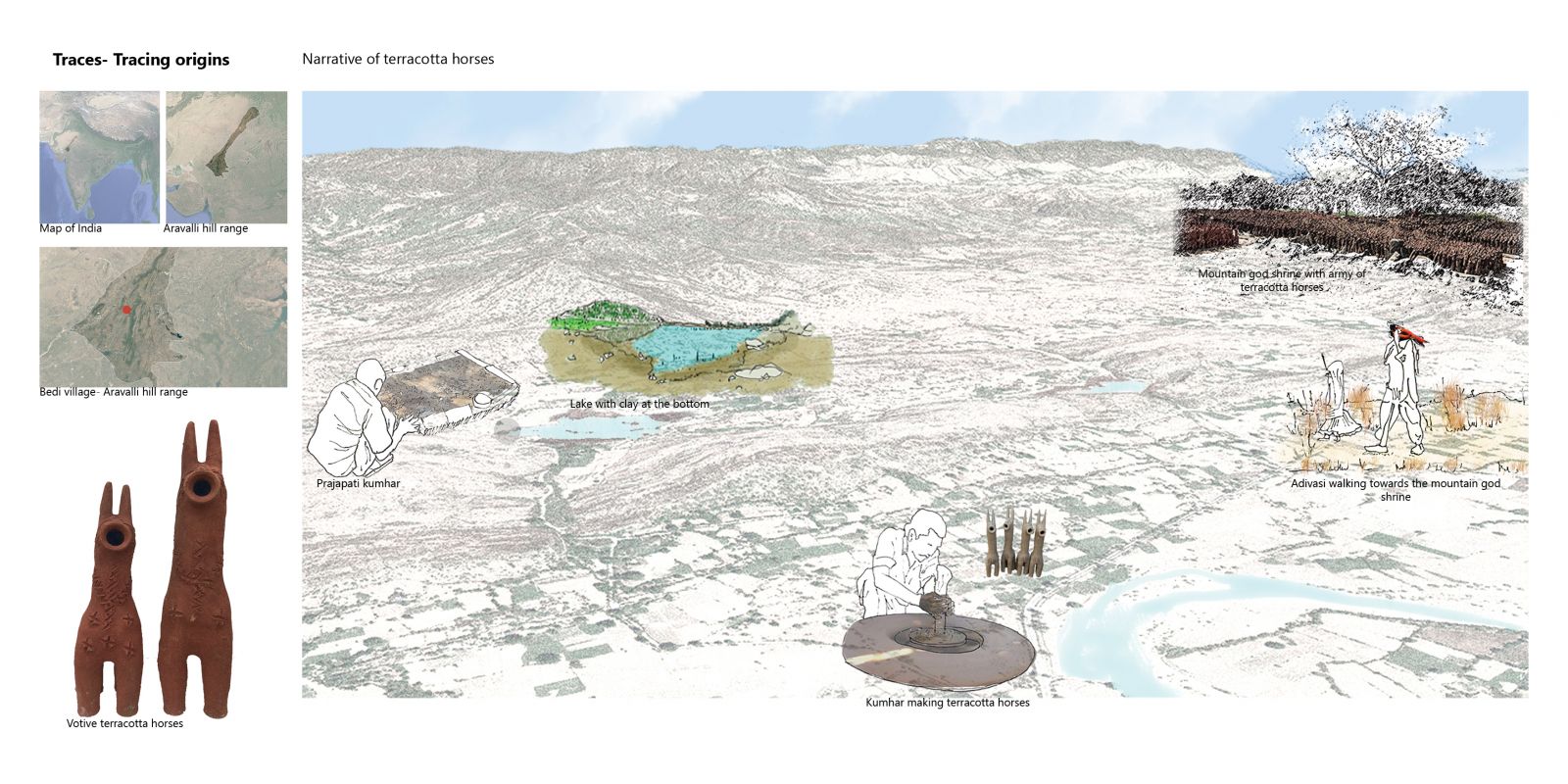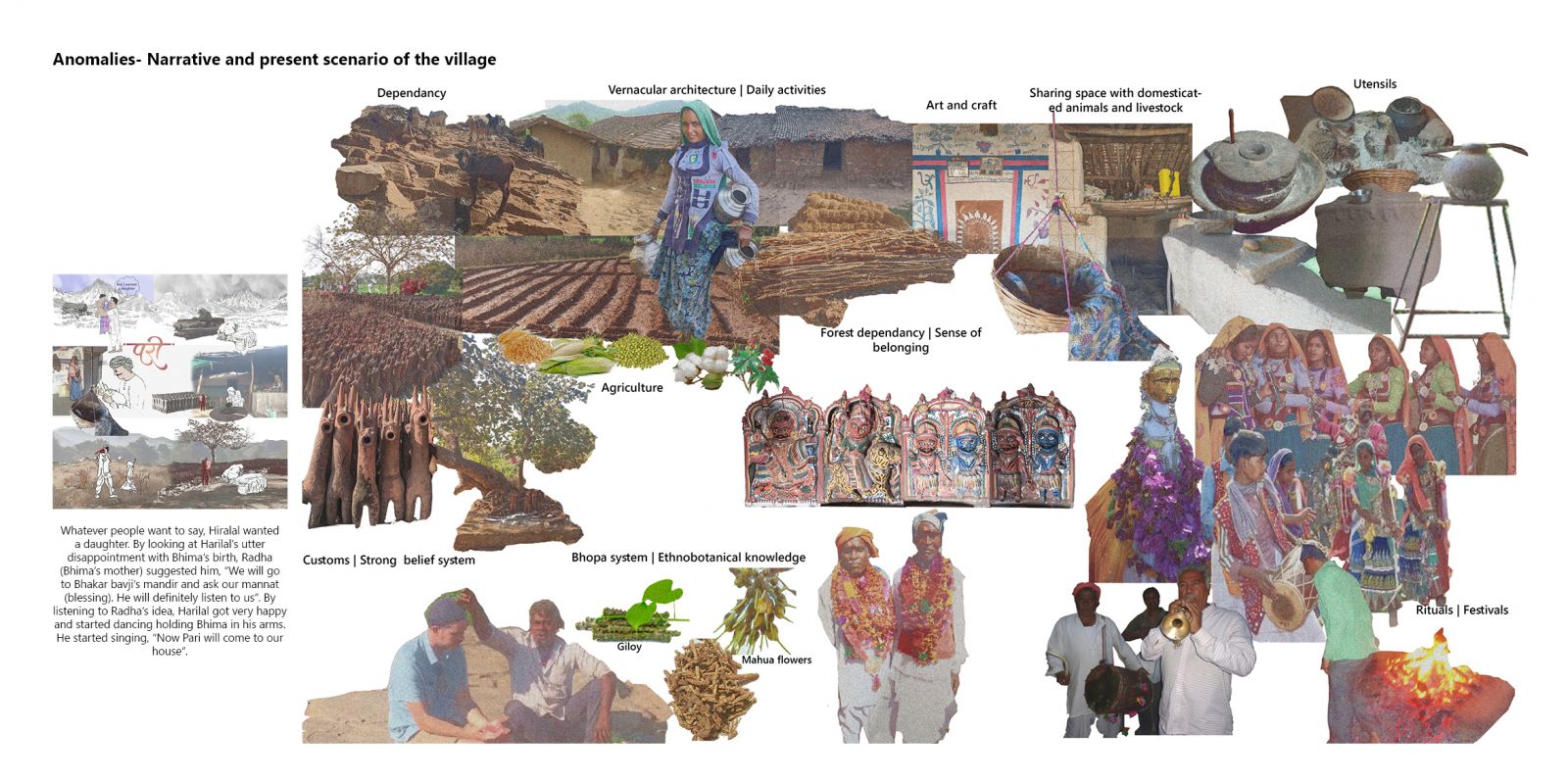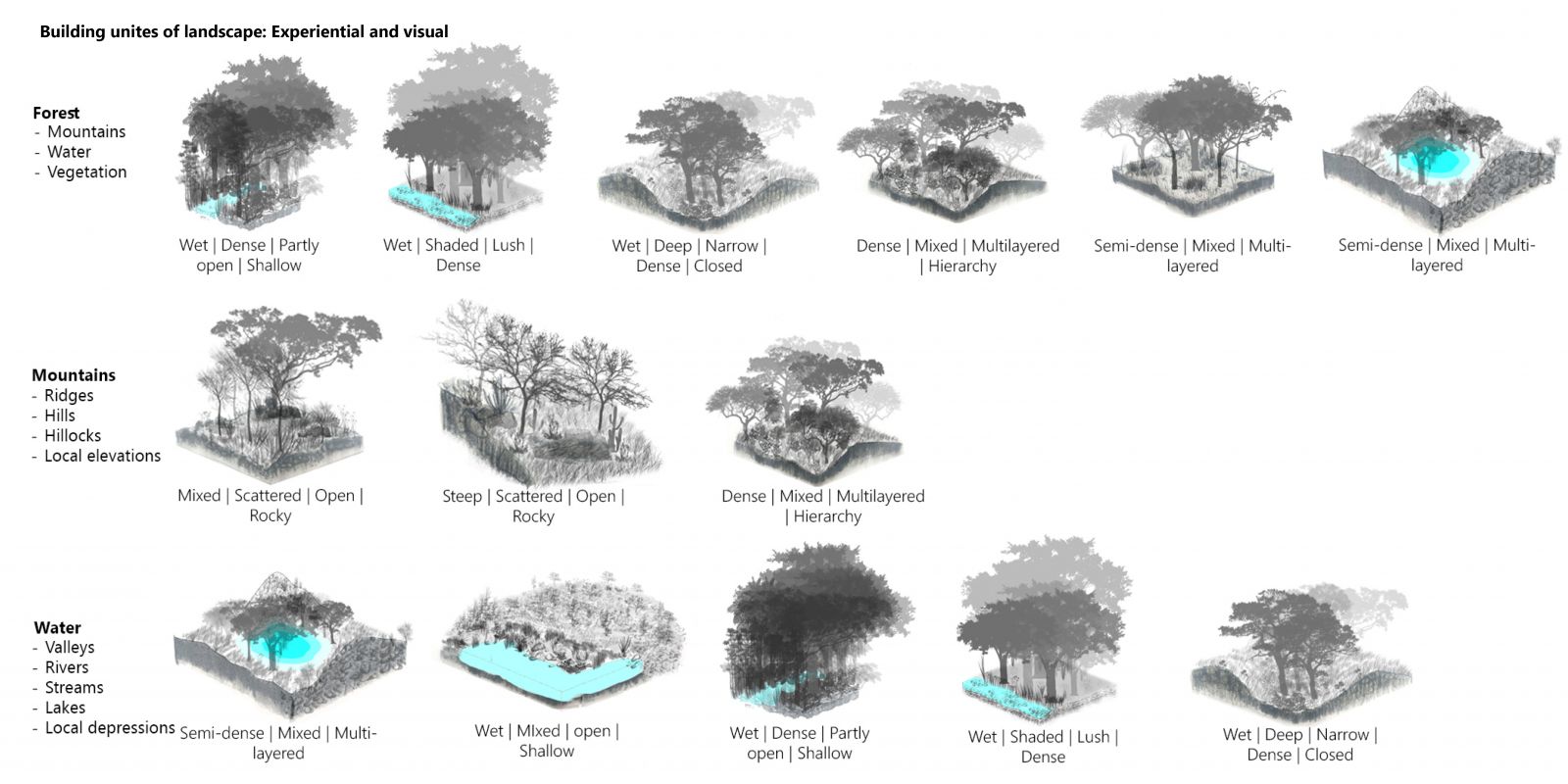- Student SAWANT TRUPTI ANANT SANDHYA
- Code PG191069
- Faculty Architecture
- Unit L4 Studio Unit
- Tutor/s Divya Shah
- TA Sankalpa Patel
Premise: The indigenous community of Garasias who dwell by the foothills of southern Aravallis have evolved their ways of life around three forces of nature- the mountains, forests and the rivers. The village studied here is called Bedi. Like inherent landscape surrounded and shielded by these natural forces, the culture too depicts inwardness. Symbolising each force of nature that acts as the shield and offer protection to the community is an aboriginal guardian god. For the protection they provide the culture acknowledges them with offerings of many kinds including terracotta horses. The inwardness of culture and its narratives and rituals have helped the culture preserve its age-old traditions and knowledge systems are intact. One of the most important amongst this is ethnobotanical knowledge. Though presently remote in location and insulated by layers of landscape and culture from the influences of the urban aspirations, the overall degradation of forests of Aravalis and development and progress that the nearby villages are depicting suggest that a certain change is imminent. Slowly when culture adapts to the times as seen in many such cases, traditional ecological knowledge that is informally stored in layers of rituals, practices, myths and stories of land will slowly begin to fade. The project looks at the documentation and formalisation of one such knowledge system – through a landscape insert. The medical practitioners are known as Bhopas/ Jankar have great knowledge about the local medicinal plants and practices. They are well acquainted with the local herbs from forest. This knowledge is passed from one generation to next generation within the Bhopa family. With the loss of forest species and newer systems of medical practices becoming accessible to community the Bhopa system and its traditional ecological knowledge will start dwindling. The project aims to conserve the ethnobotanical knowledge of the community and make it more accessible to the present and future generations of Garasias through the idea of healing landscapes. Project Brief: The project considers ‘offering’ as its metaphor and temporal palimpsest as the tool. The project itself symbolises an offering, an acknowledgement to the protection and service the Bhopa offers to the community. It looks at the idea of a place of healing within the fabric of the village. The location of which is determined by three factors – 01 of being a part of the larger forces of the landscape, a hill, a forest or a river, 02 a presence of a Devra (shrine of the guardian god) which is the place where Bhopa offers treatment and solutions presently, 03 a common congregational land. Three such pockets were identified in the village. Each has its specific origins and traits and areas of influences and territories. All of the sites are connected together by the river and its plains. These plains dotted with banyan trees are where the kids of the village play. The project then proceeds to demonstrating the details of one such place of healing, here a part of the hills and hence titled a healing mountain.








